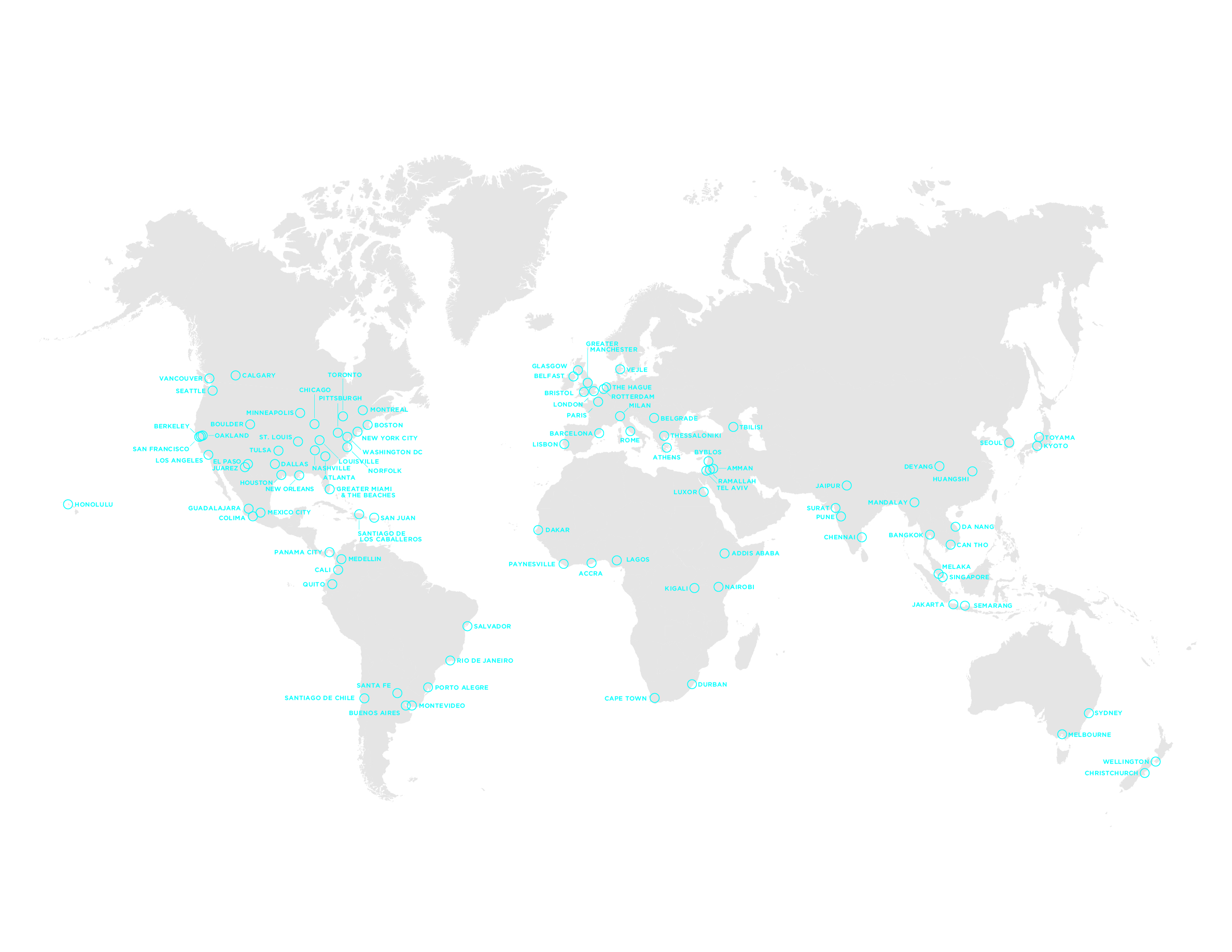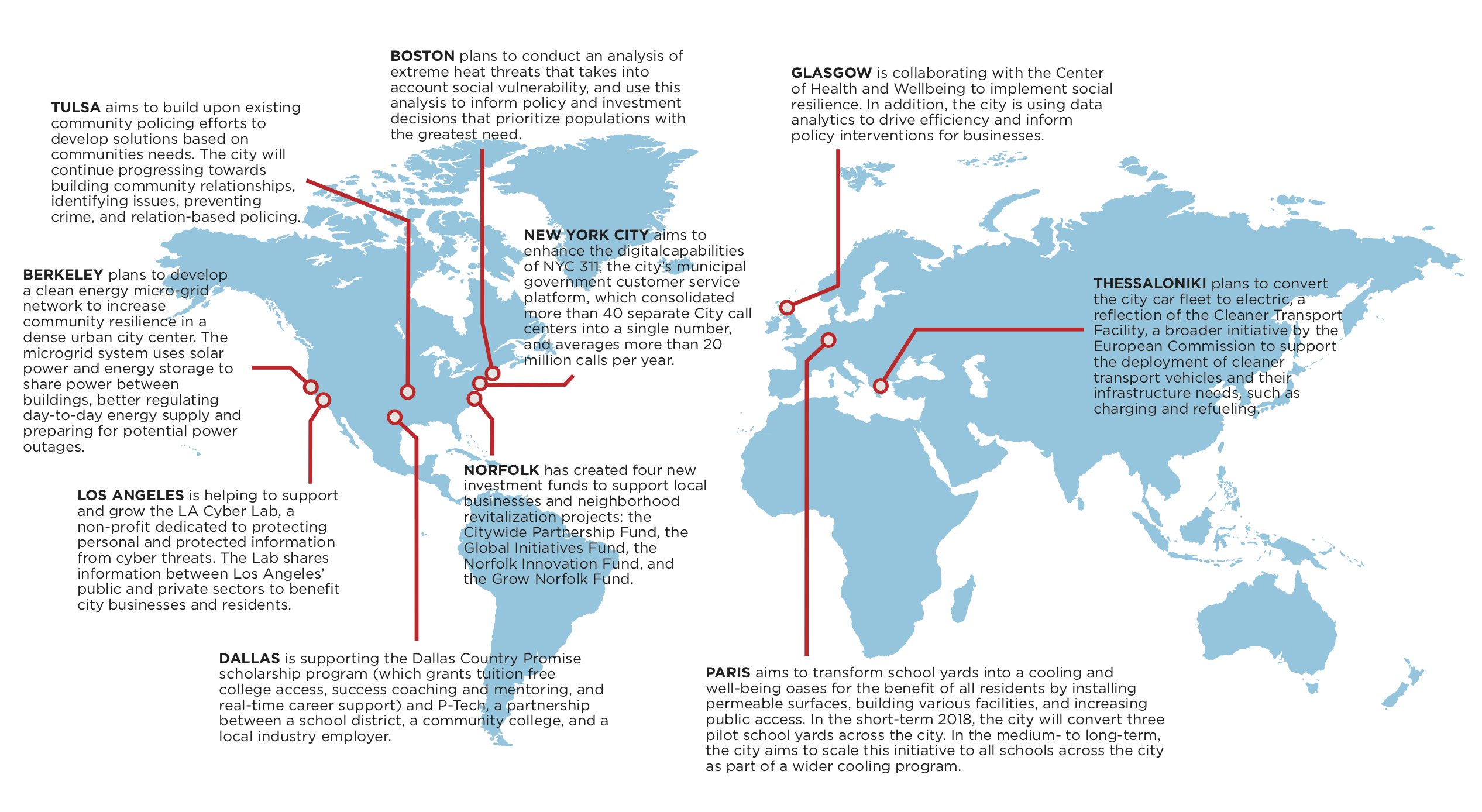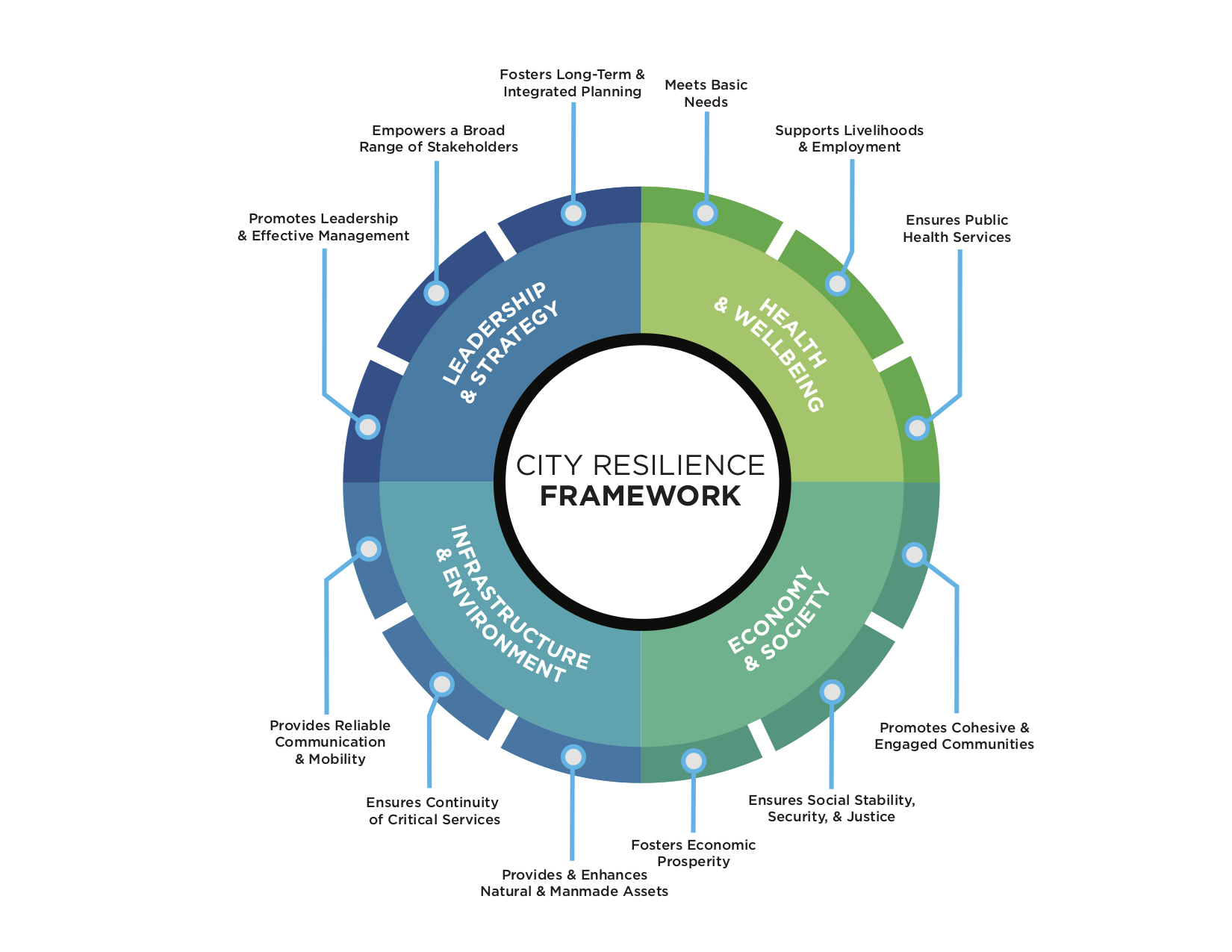Urban Resilience + 100 Resilient Cities Partnership
Cities and urban environments are becoming more diverse, dynamic, connected, and unpredictable. This is especially evident in Chicago, the heart of the Midwest. Chicago is exposed to global, regional, and local challenges and must be positioned to respond to these challenges effectively and efficiently.
100 Resilient Cities - Pioneered by The Rockefeller Foundation (100RC) - provides support and resources for cities to build urban resilience and address social, economic, and physical challenges. 100RC was created on the Rockefeller Foundation’s Centennial in 2013 and began working with an initial group of 32 cities. Chicago was selected as a resilient city in the second wave of applications.
What is urban resilience?
A city’s resilience is defined by the ability of its individuals, institutions, businesses, and systems within the community to survive, adapt, and grow despite the chronic stresses or acute shocks it experiences. A truly resilient city is not only expected to perform well in good times but also recover expediently after challenges.
100RC Cities Across the Globe

100RC helps cities become more resilient by financing the strategy development process and a Chief Resilience Officer (CRO) position. 100RC also provides cities technical assistance and access to the services of global partners, who share subject matter expertise and aid in resilience strategy development. This global network enables member cities to directly collaborate, exchange best practices, and amplify successful initiatives.
Resilience Strategies from the 100RC Global Network

City Resilience Framework (CRF)

100RC leveraged the City Resilience Framework (CRF), created by the Rockefeller Foundation, as a tool for cities to frame and discuss their resilience strengths and weaknesses. It is based on four dimensions essential to the urban resilience of any city: (1) Health and Well-Being, (2) Economy and Society, (3) Infrastructure and Environment, and (4) Leadership and Strategy. Each of the four dimensions is further defined by additional drivers of resilience. In developing Resilient Chicago, the CRF was used to assess Chicago’s relative strengths and weaknesses and identify areas of focus to improve the city’s overall resilience.
